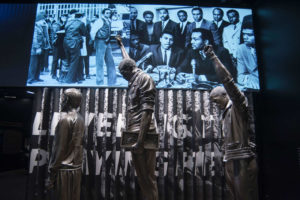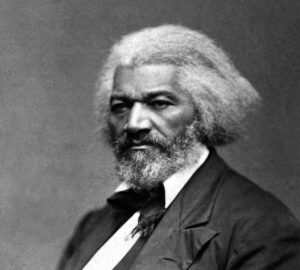I could not have been prouder when the National Museum of African American History and Culture opened in September 2016 on the hallowed Mall in Washington, DC. That it opened under the auspices of the first black president of the United States made the occasion seem providential.
In fact, I was so proud, I became a Charter member and was among the huddled masses who couldn’t wait to tour it. It was everything I expected, and more. But, as with all major museums, you’d do yourself a disservice if you limit your tour to just one visit.
 The NMAAHC has 12 exhibitions – with features ranging from heartrending yet uplifting stories of slavery to prevailing and entertaining contributions to culture. And each is filled with so many images and artifacts that one could spend an entire visit in just one exhibition and still fail to take in all it offers.
The NMAAHC has 12 exhibitions – with features ranging from heartrending yet uplifting stories of slavery to prevailing and entertaining contributions to culture. And each is filled with so many images and artifacts that one could spend an entire visit in just one exhibition and still fail to take in all it offers.
Which brings me to the Museum’s first special exhibition, which opened on Friday:
For 25 seasons and 4,561 episodes, ‘The Oprah Winfrey Show’ reflected and influenced American society.
Join us for an exploration of the life and impact of @Oprah Winfrey in our special exhibition, ‘Watching Oprah: The Oprah Winfrey Show and American Culture.’
— Smithsonian NMAAHC (@NMAAHC) June 4, 2018
My problem with this honor is very simple: there are too many black Americans who have had far greater impact on American history and culture than Oprah.
I readily concede that Oprah is a cultural phenomenon. And she is probably the most charitable black American in the history of the United States, which I duly hailed (and defended) in “Criticisms of Oprah’s School for African Girls Are Unwarranted,” January 8, 2007.
But an exploration of her life and impact would show that her signature TV show did more to help white women be their best selves than to advance black people – politically, economically or even culturally.
 And her pioneering Oprah Winfrey Network (OWN) showed no greater race consciousness – as this damning rebuke attests:
And her pioneering Oprah Winfrey Network (OWN) showed no greater race consciousness – as this damning rebuke attests:
Does Oprah’s network need more diversity? Many African-American women seem to think so, including Black Entertainment cofounder Sheila Johnson, who says that Winfrey should ‘open her circle a bit more,’ and blogs such as Hello Beautiful and Clutch, which have complained bitterly about the absence of black faces and voices.
(Newsweek, January 30, 2011)
Indeed, what does it say about this black pioneer that her most recognizable protégés are three white men, namely Dr. Phil McGraw, Dr. Mehmet Oz, and Nate Berkus, and one white women, namely Suze Orman?
But let’s face it, her life is already such an open book, the only thing worth exploring is her polyamorous relationship with Gayle and Stedman, which I have done in commentaries such as “Oprah Presents: The Greatest Love Story?” February 25, 2005, “Oprah Protests ‘I’m Not Gay!’ (Too Much, Methinks),” July 19, 2006, and “The Golden Globes (Oprah and MeToo),” January 8, 2018.
Meanwhile, this celebration of our celebrity-obsessed culture betrays what no less a person than President Obama proclaimed is the prevailing mission of this Museum:
As Americans, we rightfully passed on the tales of the giants who built this country … but too often we ignored or forgot the stories of millions upon millions of others who built this nation. … By knowing this other story, we better understand ourselves and each other. It binds us together and reaffirms that all of us are American.
(The Washington Post, September 24, 2016)
Truth be told, the only thing that explains this special exhibition is Oprah’s status as the NMAAHC’s top donor. She reportedly donated $21 million for its founding.
Because no serious historian would even include Oprah on a list of the top 25 most influential black Americans of all time. And that list would include women like Ida B. Wells, Fannie Lou Hamer, and Harriet Tubman – who most Americans wanted to be the first women (black or white) to grace the US currency, namely the $20 bill.
 This is why I respectfully submit that Frederick Douglass should have been the first black American this Museum honored with a special exhibition. As it happens, I alluded to this in “Tubman, Truth, MLK on Currency Is Fine. But What about Douglass? And Remember Geronimo?” April 15, 2016:
This is why I respectfully submit that Frederick Douglass should have been the first black American this Museum honored with a special exhibition. As it happens, I alluded to this in “Tubman, Truth, MLK on Currency Is Fine. But What about Douglass? And Remember Geronimo?” April 15, 2016:
I appreciate why American leaders (black and white) are continually honoring Martin Luther King Jr. – who led the march for black civil rights. In doing so, however, they are continually overlooking Frederick Douglass – who led the fight to free blacks from slavery.
In ‘Mall at Last, Mall at Last, Thank God Almighty a Black Is on the Mall at Last,’ November 14, 2006, I delineated why Douglass’s heroic biography and leadership make him eminently worthier than MLK.
Frankly, instead of this special exhibition, the NMAAHC should have kept Oprah in her place (i.e., “where the fun begins” in the permanent Community galleries among other notable black entertainers).
Related commentaries:
Criticisms of Oprah…
Greatest love story…
Oprah not gay…
Golden Globes…
Tubman…Douglas currency…


